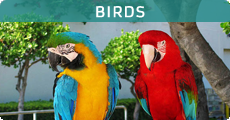Double-Crested Cormorant
Double-crested Cormorant:
Double-crested Cormorant is goose-sized, slender bodied dark bird with long neck and a hooked bill with orange throat pouch. These types of birds are normally found in coasts, islands, bays and rivers. The double crested cormorant makes massive nests made up of sticks and s other materials. The nests are often exposed to direct sun. The similar species of this kind are Great Cormorant, Neotrophic Cormorant, Brandt's Cormorant and Red-faced and Pelagic Cormorants. Males and females look alike. Double-crested Cormorant comes under the family Phalacrocorax. They are also called by the name Shag, Water Turkey, Crow Duck, Lawyer and Sea Goose. The Double-crested Cormorant swims very low in the water with its neck and head visible and dives from the surface. The flying characteristics of this Cormorant are very different as they are seen flying in long lines and very rarely in the form of angles. In 1960s the number of this species decreased due to the effects of DDT. The colonies of these birds have been victims from time to time because they were considered to be competitors with the humans for fishing. But the growth of Double-Crested Cormorant has increased lavishly by two factors. By decreasing the contaminants, particularly the discontinued use of DDT and also by the aquaculture ponds in its southern wintering grounds.
The double crested cormorant makes massive nests made up of sticks and s other materials. The nests are often exposed to direct sun. The similar species of this kind are Great Cormorant, Neotrophic Cormorant, Brandt's Cormorant and Red-faced and Pelagic Cormorants. Males and females look alike. Double-crested Cormorant comes under the family Phalacrocorax. They are also called by the name Shag, Water Turkey, Crow Duck, Lawyer and Sea Goose. The Double-crested Cormorant swims very low in the water with its neck and head visible and dives from the surface. The flying characteristics of this Cormorant are very different as they are seen flying in long lines and very rarely in the form of angles. In 1960s the number of this species decreased due to the effects of DDT. The colonies of these birds have been victims from time to time because they were considered to be competitors with the humans for fishing. But the growth of Double-Crested Cormorant has increased lavishly by two factors. By decreasing the contaminants, particularly the discontinued use of DDT and also by the aquaculture ponds in its southern wintering grounds.
Behavior:
Double crested Cormorant swims very low in the water and often with its neck and head visible which dives from the surface. For propulsion it uses its feet and it can able to dive to the depth of 1.5-7.5m. It usually spends its time by standing with its wings outstretched to make them dry because they are not fully waterproofed. Double crested Cormorant flies over the water using bill tilted slightly upwards.
Diet:
The regular diet for the double crested Cormorant is found in the sea, freshwater, lakes and rivers. It mainly eats fish, and sometimes amphibians and crustaceans. The smaller fish is eaten while the bird is under the water and the large fishes are brought to the land before they eat.
Cormorant's pellets containing undigested parts of their meals such as bones.
Breeding:
Breeding of young one's takes place mostly in the coastal areas near inland rivers and lakes. They build the nests in the tree, on cliff edges. They are expressive birds usually found in groups and more often with aquatic birds and have a deep, grunt call.












